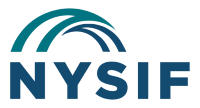Governor Andrew M. Cuomo announced that new health insurance reforms took effect January 1, 2017, aimed at combatting New York State's heroin and opioid crisis. The reforms were part of a landmark legislative package signed by the governor in 2016.
Health insurance plans are now required to cover treatment services provided to New Yorkers suffering from opioid addiction, increase access to treatment, expand community prevention strategies, and limit the over-prescription of opioids in New York.
"With these landmark reforms fully enacted, we have removed artificial barriers that prevented New Yorkers from receiving the help they need and put into place new safeguards to get these drugs off the street," Governor Cuomo said. "As families and communities across the nation grapple with the devastating effects of this heroin and opioid crisis, New York is leading the fight to stamp out this disease once and for all."
The new, insurance-related protections are the final components of the package to take effect and include four measures to remove burdensome access barriers for inpatient treatment and medication. These measures:
- End prior insurance authorization to allow for immediate access to inpatient treatment as long as such treatment is needed.
- End prior insurance authorization to allow for greater access to drug treatment medications.
- Require all insurance companies to use objective state-approved criteria to determine the level of care for individuals suffering from substance abuse.
- Mandate insurance coverage for opioid overdose-reversal medication.
The new coverage requirements apply to small group and large group plans regulated by the Department of Financial Services that are issued or renewed beginning January 1, as well as plans sold to individual consumers.
The legislative package included several best practices and recommendations identified by the Governor’s Heroin and Opioid Task Force, and builds on New York's aggressive efforts to break the cycle of heroin and opioid addiction. The package included the following community prevention strategies:
- Reducing prescription limits for opioids from 30-days to seven days for initial opioid prescriptions for acute pain, with exceptions for chronic pain and other conditions.
- Requiring ongoing education on addiction & pain management for all physicians and prescribers, who must complete three hours of education every three years on addiction, pain management and palliative care.
- Mandating pharmacists provide easy-to-understand information to consumers on risks associated with drug addiction and abuse, including information about local treatment services.
- Requiring data collection on overdoses and prescriptions to assist the state in providing additional protections to combat this epidemic.
Read the governor's full press release.
